Description
Green onions, Allium fistulosum, are a wonderful, perennial, clumping onion relative. This specific variety, known as “koba,” is a Hawaiian cultivar that is perfectly adapted to our climate. Koba is a short-day onion variety that produces numerous seeds during the winter. Planting in the spring (April-May) allows the plants to grow as long as possible before flowering is induced by changes in day length. This cultivar has thin leaves and grows to about 18 inches tall. The most interesting part of the plant is the way it produces a single, large, fat stem that eventually divides into multiple smaller stems. This onion can be harvested before division, when it is still fat and large, or after, to take advantage of more, albeit smaller, stems. This plant has a regular green onion flavor: mild in the leaves and more pungent towards the bulbs. This is the onion relative to grow; it is as abundant as it is delicious!
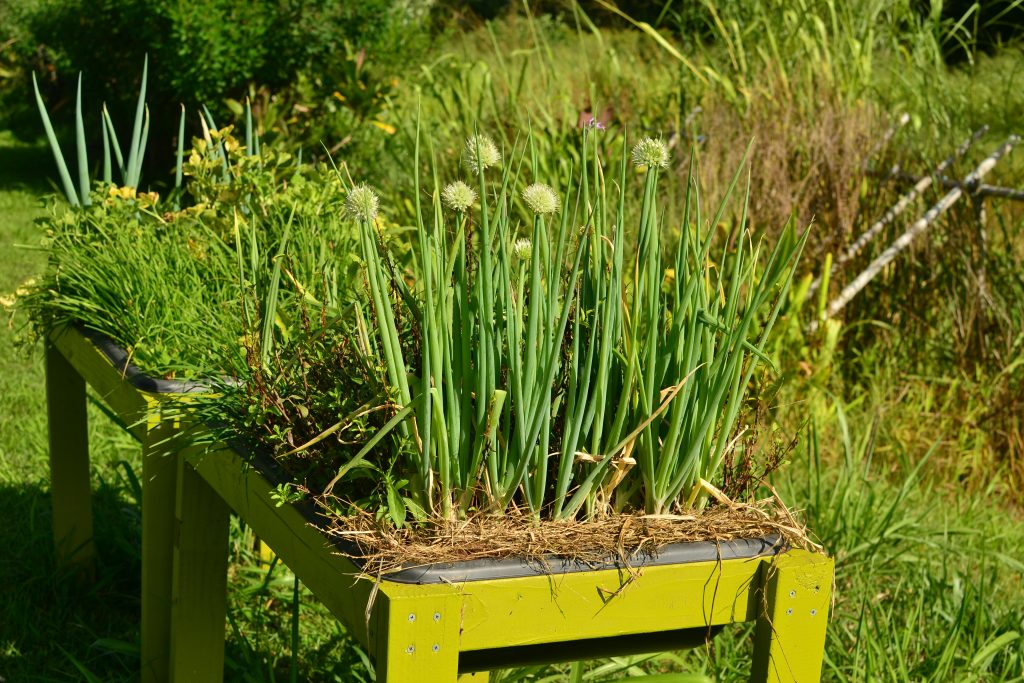
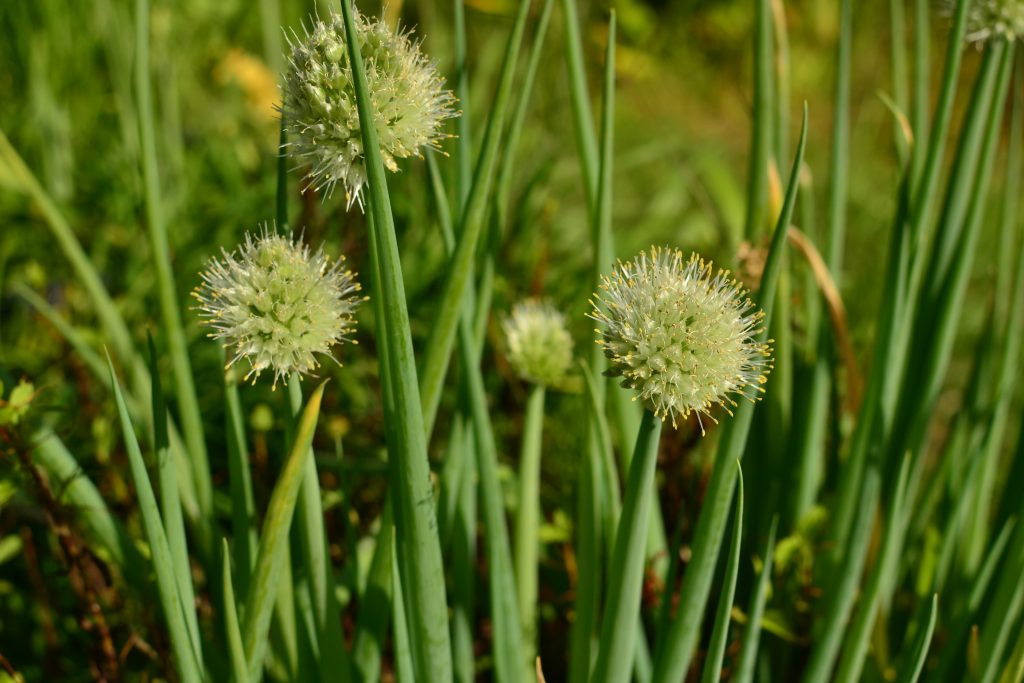
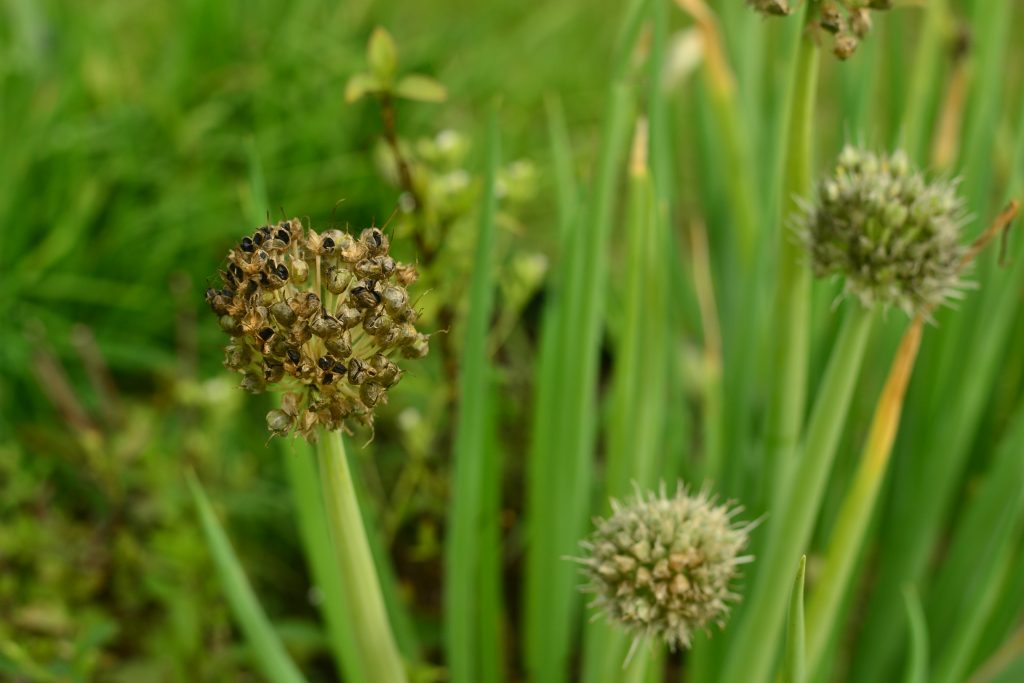
Ripe Seed
Propagation
Koba green onions can be propagated by seed, by division, or from bulb “scraps.”
Plant seeds ½ inch deep.
Divide clumps once they have multiplied.
All green onion varieties will re-root and grow from the bulb (bottom white part) of the plant. Simply remove the bottom two inches including the bulb and re-plant.
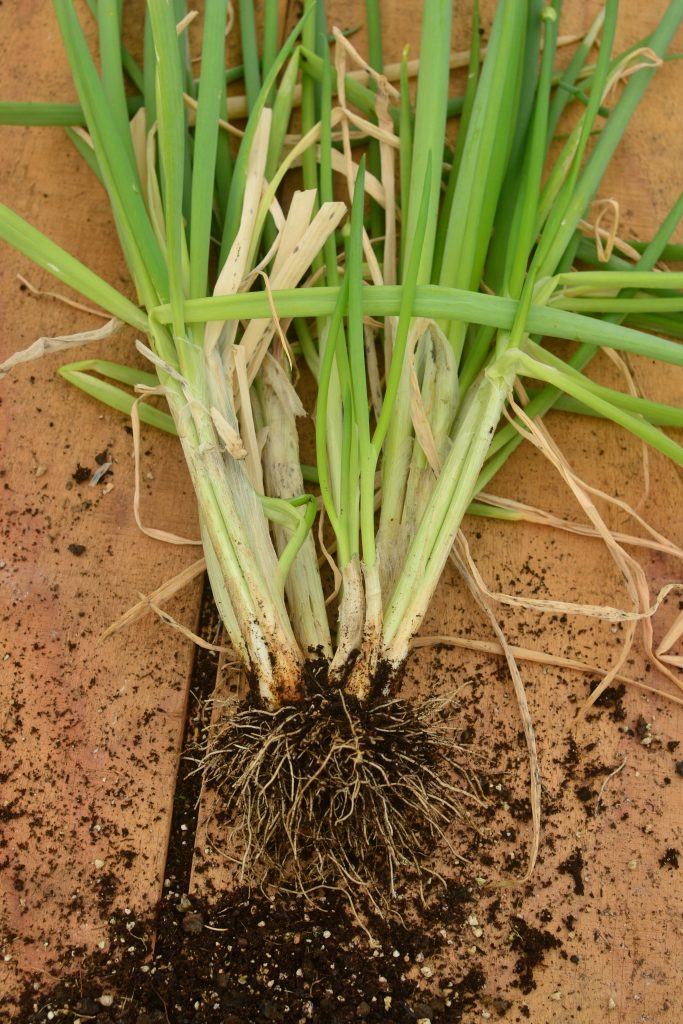
Remove plant from ground
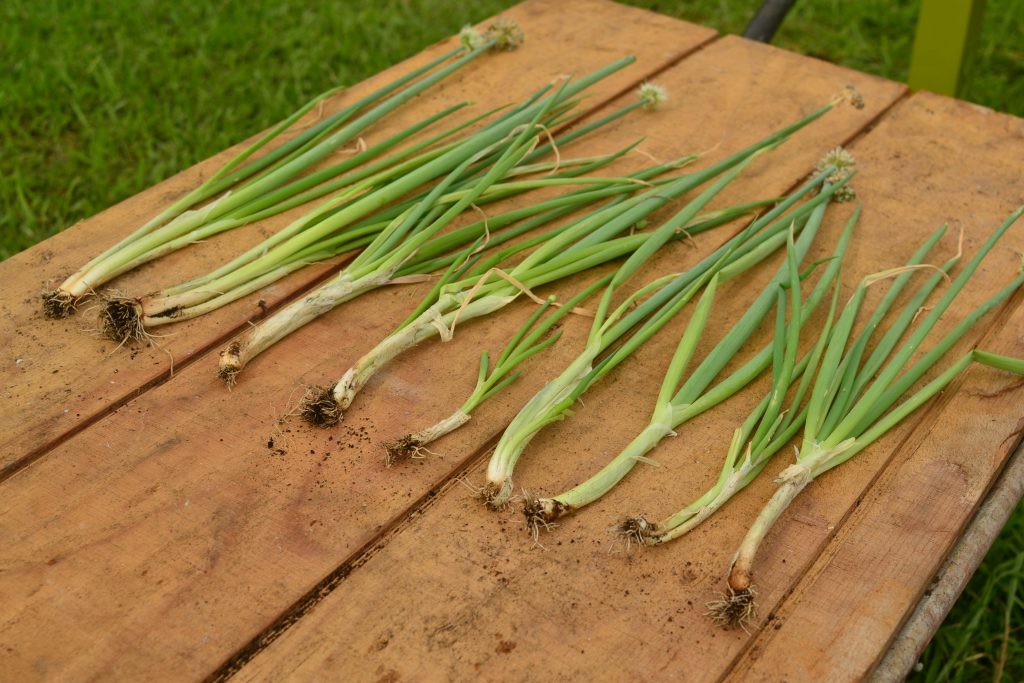
Divide
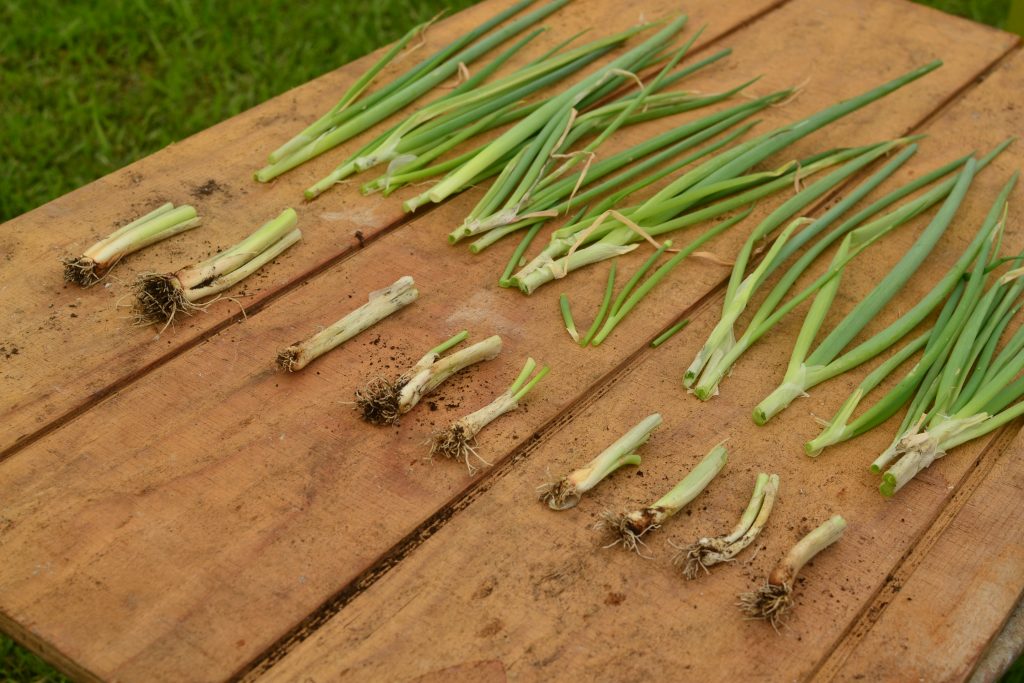
Remove tops
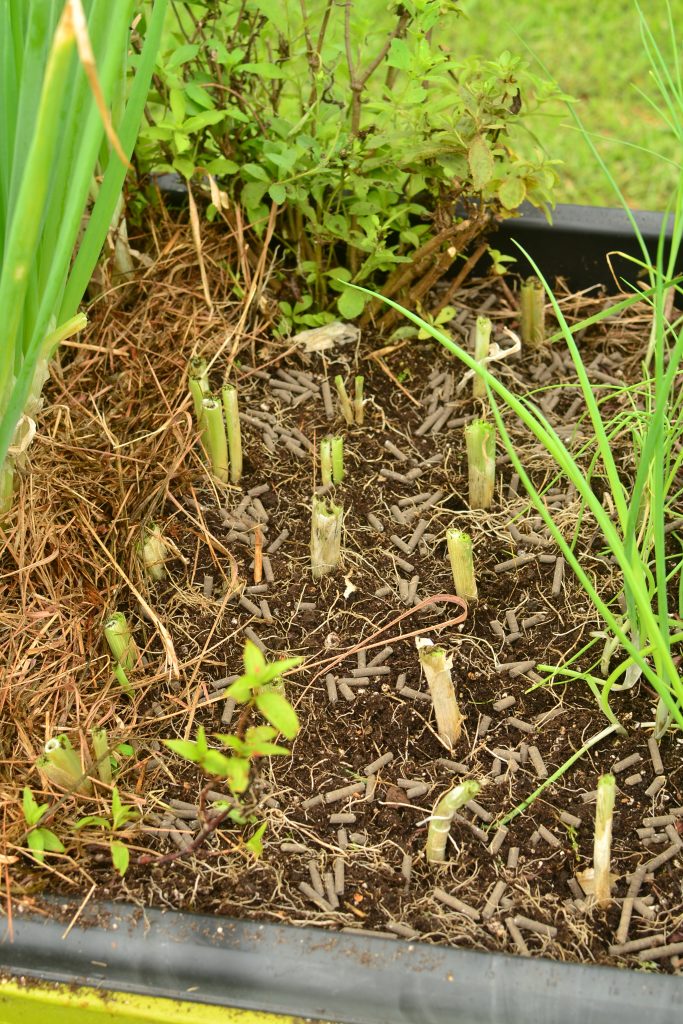
Replant and fertilize
Care
Koba green onions are very easy to grow. Keep them weeded when young, give them full sun, and fertilize regularly, especially after a harvest. I’ve found they grow incredibly well in containers, which reduces weed pressures, and you can keep them close to your kitchen for ease of harvest.
Matures in 50-60 days from clump division or 80-90 days from seed.
Eating
Flowers, greens and scapes are edible.
Green onions are perennial if harvested properly. Cutting off the top of the plant one to two inches above the soil surface will allow the plant to regenerate and grow a new top. The harvested tops can be consumed normally. Unfortunately, harvesting and eating the onions in this manner doesn’t allow you to eat the more potent part of the plant, so supplementing additional stems can make up for this missed pungency.
For the full green onion experience, pull them entirely out of the ground and consume from bulb to greens, just as you would with onions from the market.
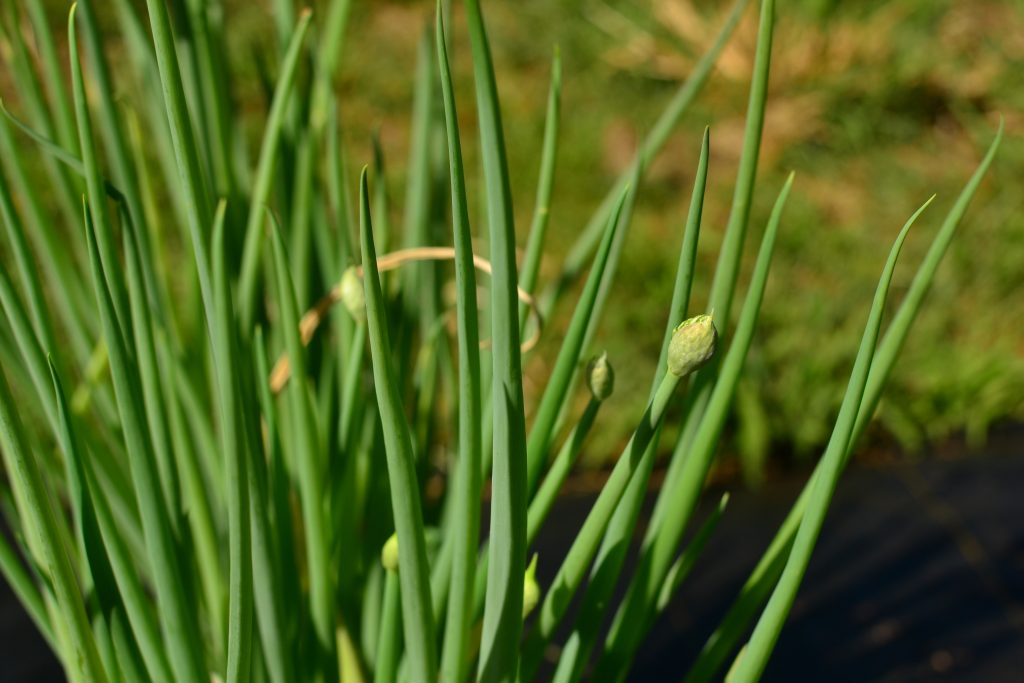
Green Onion Scapes (unopened flowers)
Where to obtain planting materials
I got my original seed from Hawaii Seed Growers Network, a wonderful resource for Hawaii. https://www.hawaiiseedgrowersnetwork.com/product-page/koba-onions
Green onions can always be grown from market purchased products. Buy fresh green onions and replant the bulb. This is a great method; however, you may not be sure of variety nor the specific cultivar habits.
My Garden
Onions are one of my favorite vegetables. It’s very hard to grow normal bulbing-type onions here in lowland Hawaii due to our daylength, rain, and lack of cool weather. I’ve tried a few times to grow normal bulbing onions and always end up with very small bulbs. Through all this trial and error, I’ve discovered that green onions are a good enough replacement without all the effort! Green onions flourish here, sometimes reaching up to two feet tall, and always have leaves ready for harvest. Every garden should have a patch of green onions near the kitchen!
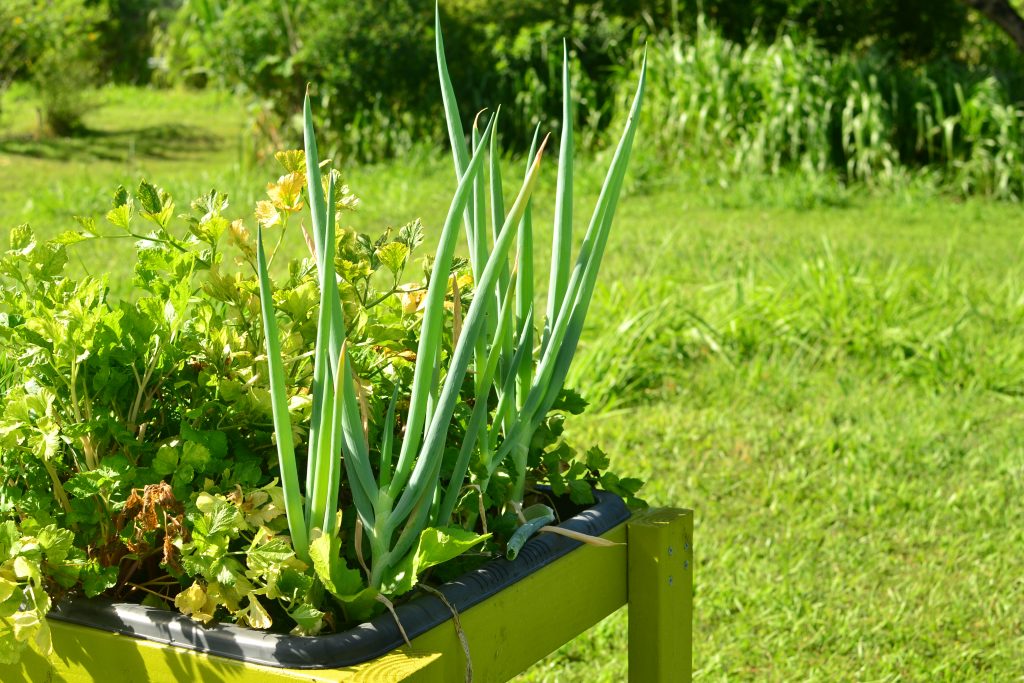
a different green onion variety. notice larger leaves and blueish tint
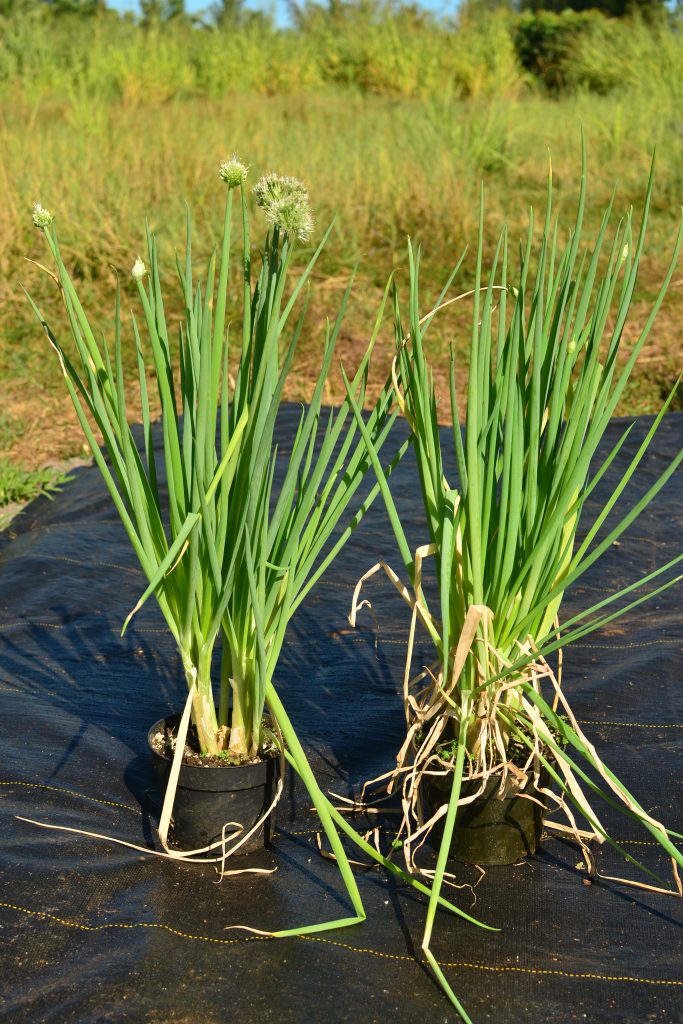
Koba grow extremely well in 1/2 gallon pots. perfect for cultivating near your kitchen
Happy Gardening!
Nice write-up. Thanks, that looks like a promising option for when I move to Florida.
Unfortunately Koba seeds are not available on the Mainland and the Hawaii Seeds Growers’Network will not ship to Mainland.:-(
you could probably find other Allium fistulosum species that will produce the same. i also grow the he shi ko bunching onion from baker creek and it grows pretty much the same as the koba. currently out of stock though
https://www.rareseeds.com/store/vegetables/bulk-vegetables/onions-and-leeks/he-shi-ko-bunching-onion
I am growing these on the Big Island, I got seeds from the U of Hawaii seed lab. Not sure if they would ship to the mainland.